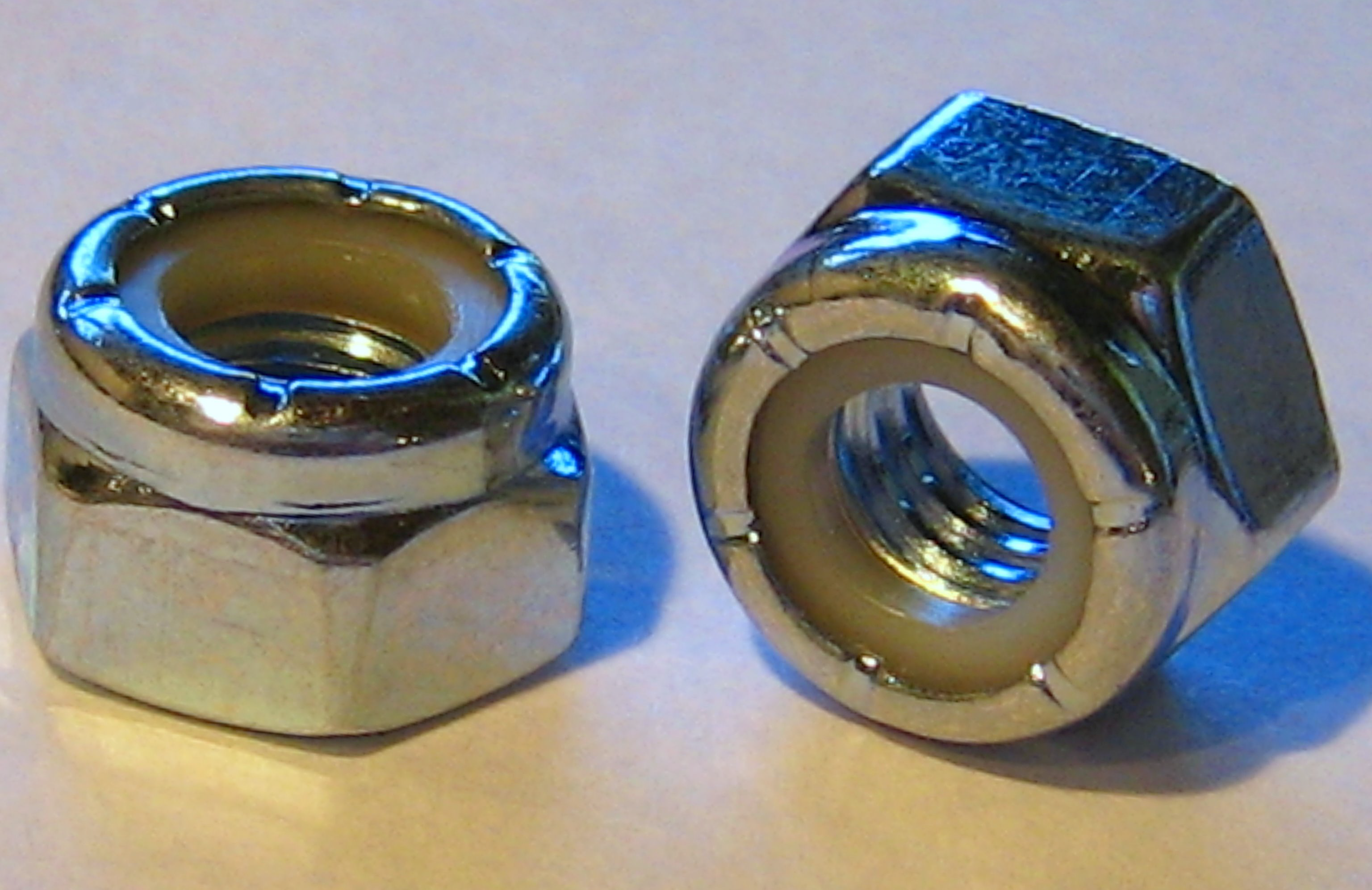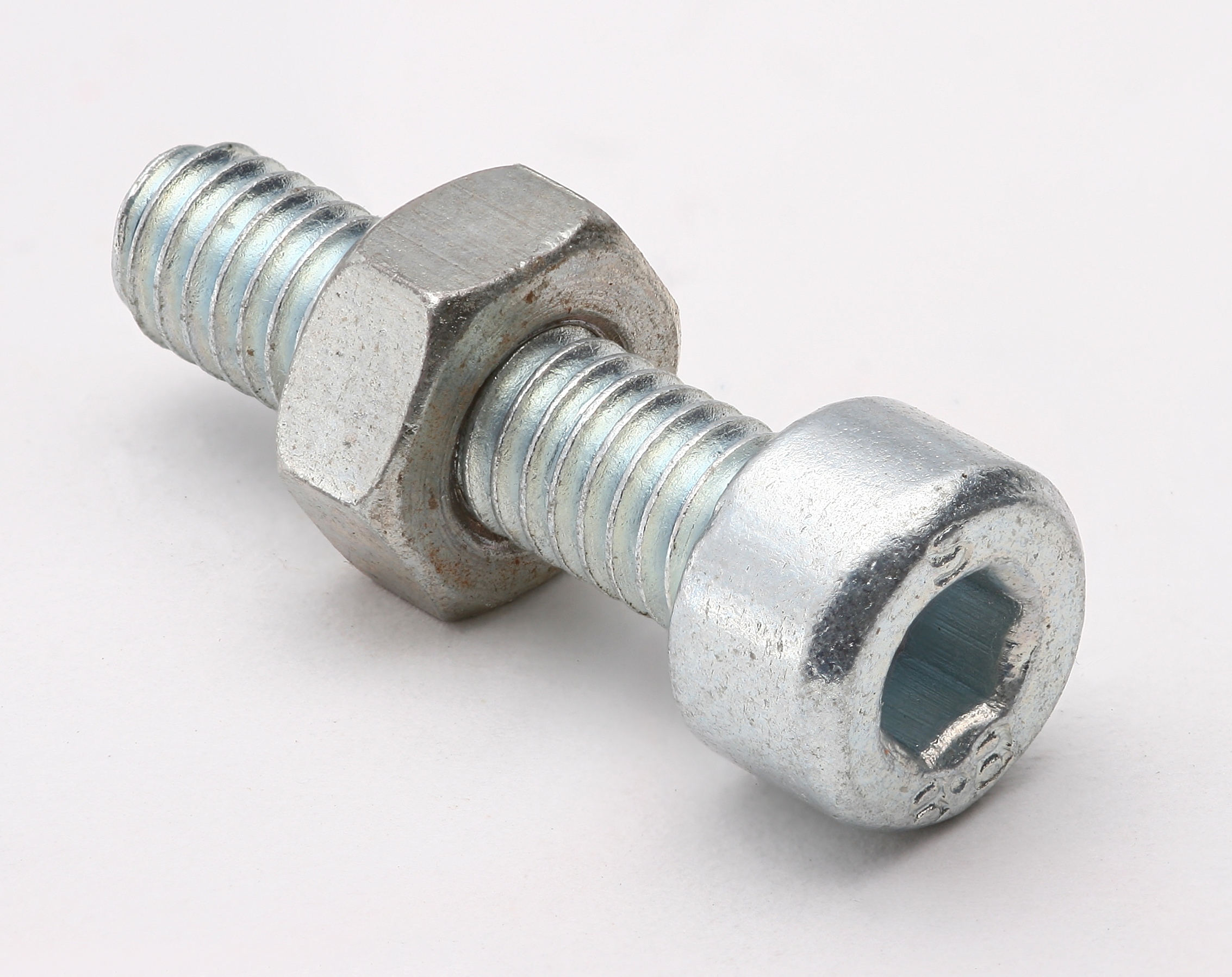|
Interfering Thread Nut
An interfering thread nut is a type of locknut that has an undersized root diameter. This creates an interference between the nut Nut often refers to: * Nut (fruit), fruit composed of a hard shell and a seed, or a collective noun for dry and edible fruits or seeds * Nut (hardware), fastener used with a bolt Nut or Nuts may also refer to: Arts, entertainment, and media Co ... and the fastener, plastically deforming the threads on the fastener. Due to this deformation they are usually only used on permanent or semi-permanent installations.. A variation of this nut is the tapered thread nut. It utilizes a tapered thread to achieve the interference. The nut goes on easily, because the thread diameter starts at a standard size; as the nut is further threaded on it begins to lock, much like a distorted thread locknut. References Nuts (hardware) {{Mech-engineering-stub ... [...More Info...] [...Related Items...] OR: [Wikipedia] [Google] [Baidu] |
Locknut
A locknut, also known as a lock nut, locking nut, self-locking nut, prevailing torque nut,. stiff nut or elastic stop nut, is a nut that resists loosening under vibrations and torque. Prevailing torque nuts have some portion of the nut that deforms elastically to provide a locking action. Free-spinning locknuts exist which carry the advantage of not requiring extra torque until seated. Types There are various kinds of specialised lock nuts, including: * Castellated nut * Distorted thread locknut ** Centerlock nut **Elliptical offset locknut ** Toplock nut **Philidas nut * Interfering thread nut ** Tapered thread nut * Jam nut * Jet nut (K-nut). * Keps nut (K-nut or washer nut) with a free-spinning washer. In the locknut form, this is a star-type lock washer. * Plate nut * Polymer insert nut (Nyloc nut) * Security locknut All steel reusable nut for high vibration and harsh environments. * Serrated face nut * Serrated flange nut * Speed nut (sheet metal nut or Tinnerman nu ... [...More Info...] [...Related Items...] OR: [Wikipedia] [Google] [Baidu] |
Nut (hardware)
A nut is a type of fastener with a screw thread, threaded hole. Nuts are almost always used in conjunction with a mating bolt (fastener), bolt to fasten multiple parts together. The two partners are kept together by a combination of their threads' friction (with slight deformation (engineering)#Elastic deformation, elastic deformation), a slight Tension (physics), stretching of the bolt, and compression (physics), compression of the parts to be held together. In applications where vibration or rotation may work a nut loose, various locking mechanisms may be employed: lock washers, jam nuts, eccentric double nuts, specialist adhesive thread-locking fluid such as Loctite, safety pins (split pins) or lockwire in conjunction with castellated nuts, nylon inserts (nyloc nut), or slightly oval-shaped threads. Square nuts, as well as bolt heads, were the first shape made and used to be the most common largely because they were much easier to manufacture, especially by hand. While rare to ... [...More Info...] [...Related Items...] OR: [Wikipedia] [Google] [Baidu] |
Plastic Deformation
In engineering, deformation refers to the change in size or shape of an object. ''Displacements'' are the ''absolute'' change in position of a point on the object. Deflection is the relative change in external displacements on an object. Strain is the ''relative'' internal change in shape of an infinitesimally small cube of material and can be expressed as a non-dimensional change in length or angle of distortion of the cube. Strains are related to the forces acting on the cube, which are known as stress, by a stress-strain curve. The relationship between stress and strain is generally linear and reversible up until the yield point and the deformation is elastic. The linear relationship for a material is known as Young's modulus. Above the yield point, some degree of permanent distortion remains after unloading and is termed plastic deformation. The determination of the stress and strain throughout a solid object is given by the field of strength of materials and for a structure ... [...More Info...] [...Related Items...] OR: [Wikipedia] [Google] [Baidu] |
Screw Thread
A screw thread, often shortened to thread, is a helical structure used to convert between rotational and linear movement or force. A screw thread is a ridge wrapped around a cylinder or cone in the form of a helix, with the former being called a ''straight'' thread and the latter called a ''tapered'' thread. A screw thread is the essential feature of the screw as a simple machine and also as a threaded fastener. The mechanical advantage of a screw thread depends on its ''lead'', which is the linear distance the screw travels in one revolution. In most applications, the lead of a screw thread is chosen so that friction is sufficient to prevent linear motion being converted to rotary, that is so the screw does not slip even when linear force is applied, as long as no external rotational force is present. This characteristic is essential to the vast majority of its uses. The tightening of a fastener's screw thread is comparable to driving a wedge into a gap until it sticks fast thro ... [...More Info...] [...Related Items...] OR: [Wikipedia] [Google] [Baidu] |
Distorted Thread Locknut
A distorted thread locknut,McMaster, p3139 is a type of locknut that uses a deformed section of thread to keep the nut from loosening from vibrations or rotation of the clamped item. They are broken down into four types: elliptical offset nuts, centerlock nuts, toplock nuts and partially depitched (Philidas) nuts. High temperature use Because these nuts are solid metal, they are effective in elevated temperature settings, unlike nyloc nuts. High grade nuts can withstand temperatures up to . Safety factors High strength distorted thread nuts cannot be used with low strength fasteners because the hard nut will act like a die and destroy the threads on the fastener. Elliptical offset nuts Elliptical offset nuts is a catch-all category that encompasses designs known as oval locknuts or non-slotted hex locknuts,. The salient feature is that the thread form has been deformed at one end so that the threads are no longer perfectly circular. The deformed end is usually shaped into an ellip ... [...More Info...] [...Related Items...] OR: [Wikipedia] [Google] [Baidu] |



